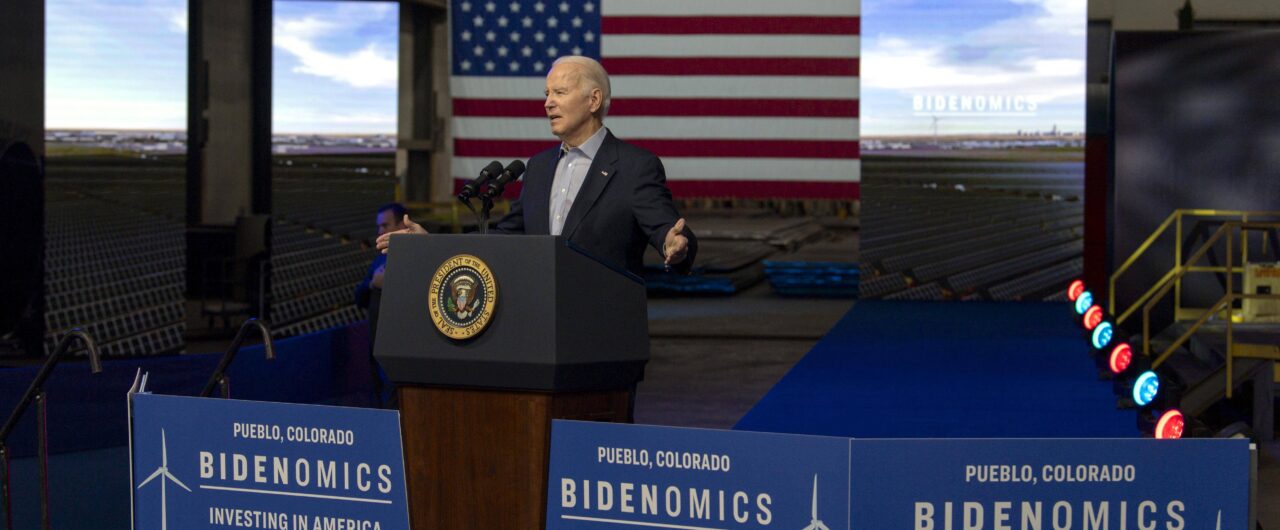The first two years of the Biden Administration ushered in a commitment to industrial policy not seen since the days of Lyndon Johnson and Franklin Delano Roosevelt. The passage of seminal pieces of legislation–the Inflation Reduction Act (IRA), the Bipartisan Infrastructure Law (BIL), and the CHIPS and Science Act (CHIPS) most prominent among them–alongside multiple executive actions aimed to change the course of the economy and reset the priorities of the federal government to center American workers and support American industry. It was not without difficulty nor discord. Partisan politics did and still do threaten to stop or curb this progress and the impact of these laws on international collaboration and competition are still being sorted. With all that said, the early stages of implementing this new American industrial policy are bearing wholesome fruit, but challenges lie ahead.
Passing legislation of the magnitude of the IRA and BIL was certainly difficult, and yet implementing those laws has been no easier. The last year, the Biden Administration has focused intently on moving the massive sums of money to states, communities, people, and industry in a timely fashion. Most of this money has been rightfully subject to guidelines for equity and worker empowerment, and many of those were either new applications of previous standards or new standards altogether. In spite of this, guidelines for wages, apprenticeships, domestic content, and place-based investing have all been initiated and finalized in enough time to ensure that investments have started flowing out of the door.
There have been significant touch points along the way. Building and accessing a responsible supply chain for critical materials and their associated raw materials, core to policies in all three pieces of legislation, has required consistent Administration engagement with countries across the world and the development of mineral production and processing capabilities at home. Inflationary pressure on supply chains and interest rate increases significantly impacted the costs of projects, which has most acutely impacted the offshore wind industry. And the growth in electric vehicles has had to overcome a culture war incursion and a strike by the United Auto Workers, who rightfully took the fight to the auto companies demanding better wages and conditions for their existing members and also a clear future in the companies’ investments in EV assembly and battery manufacturing.
Have these impacts been felt yet? Well, very recent polling has shown that only 36% of registered voters in the U.S. have heard a lot or even some about the IRA. When hearing a briefing describing the law, that very same poll shows that a large majority–71%–support it. This leads to a fairly straightforward conclusion. Americans, who are dealing with similar issues with rising costs as Europeans, have yet to fully understand the impact of the Administration’s successful industrial policy. Job creation is happening. Massive investments in communities are happening. Successful perception by everyday Americans?… not quite yet.
To change that perception will require persistent storytelling about the impacts on everyday Americans by different voices. It will also require the integration of these messages into the outreach by key parts of the progressive ecosystem. That should not be terribly difficult because President Biden’s worker focused, green industrial policy is something that–in different ways–the labor and environmental movement have been demanding for years. Unions have been and will continue to message to their members about the success of this policy strategy for high quality job creation, and the environmental movement will have the message that this strategy is the one that has finally delivered broad, bold climate action.
In addition to near term perceptions, the impact of this new industrial policy will endure over the long term. It has linked the trials of working people with the crisis of climate change and the opportunity to revitalize portions of the U.S.’s industrial base. This link is critical to building trust and support from working people. It is creating a culture that the government can, in fact, work for working people while solving the biggest challenges of our time.
This article was produced with the financial support of the European Parliament. It does not represent the view of the European Parliament.








